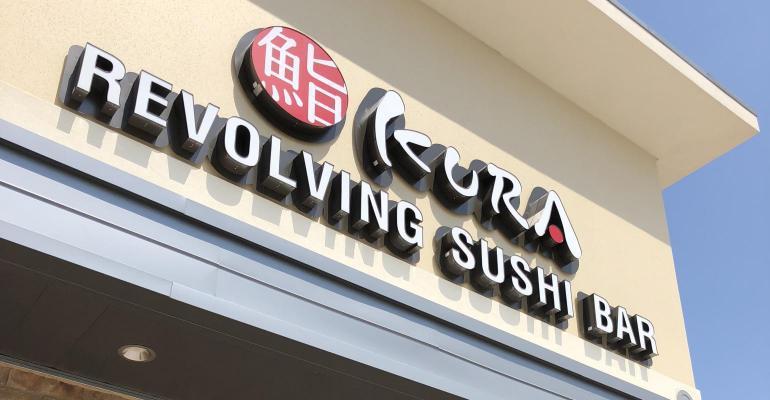An industry-wide traffic slide was widely reported during the last round of earnings calls, but there were some anomalies, including Kura Sushi, which reported fourth quarter traffic growth of 5.6% during its earnings call last week. This lapped a 14% year-over-year increase in traffic, by the way, and far outpaces the company’s pre-pandemic levels, in addition to the overall industry.
During the Stephens Annual Investment Conference last week, Ben Porten, SVP of investor relations and system development, Hajime Jimmy Uba, president and CEO, and CFO Jeff Uttz, provided a deeper look at the company’s recent performance, which also included a 70-basis-point improvement in restaurant-level operating profit margins, to 21.9%; a same-store sales increase of 6.5%; and a jump in average unit volumes from $3.8 million in fiscal year 2022 to $4.3 million in fiscal year 2023.
Despite a host of positive trends, Uttz noted the focus should be on traffic and what is getting people in the door. Uba added that it comes down to the company’s value proposition, which is in line with its casual dining peers in terms of average check size, and about half of what mom and pop concepts charge; “so it’s a no-brainer decision for consumers,” he said.
“People tend to reduce frequency of eating out occasions every month and if you’re only going out two times a month instead of four times a month, you really want the best bang for your buck,” Porten said. “You can make a burger at home, a pizza at home, a burrito at home. Nobody makes sushi at home, so that’s one of the reasons we’ve seen so much traffic growth.”
Kura has also benefited from pandemic closures, which disproportionately hit independent concepts. Porten noted that the sushi category is extremely fragmented, with the top two players, including Kura, controlling 1-to-2% of the revenue.
“This is not seen in other restaurant verticals, and this was further exacerbated by the pandemic. Unfortunately, because so many Japanese restaurants were mom and pops, they didn’t have the balance sheets to survive month after month of no revenue, so there’s been a die-off of Japanese restaurants. So, I think that’s had a very meaningful impact on our white space potential and it’s resulted in traffic tailwinds for us.”
Kura has had positive traffic since the pandemic ended, in fact. It is one of the few casual dining concepts experiencing such trends at this moment. Porten said the concept is highly insulated when there are macroeconomic pressures because of its size and its differentiated, tech-enabled experience. Notably, the company was able to experience the benefits of three initiatives for the first time in Q4, which has also provided a tailwind. Those initiatives include robot servers, tableside payment and tableside drink orders.
“There was a significant server shortage last year, so the robot servers had a meaningful impact on customer satisfaction. Technology is so much a part of our brand, so when we introduce it, it’s seen as accretive to the experience. I’ve seen other chains try it and then roll it back because guests are thinking ‘where did my server go?’ so that really works in our favor,” Uba said. “Our philosophy is if something can improve the dining experience while improving the bottom line and helping with operational efficiencies, that’s the trifecta. Robot servers are a perfect example of that.”
Further, in mid-October, Kura introduced a new rewards program, and since its launch, the number of weekly new user registrations has more than doubled. Those are entirely new guests, Porten adds, and the program complements the traffic work on the marketing side, such as Kura’s Demon Slayer and We Bare Bears collaborations. Executives expect this program to support continued traffic lifts, as well as frequency.
“What we’re really excited about is it allows us to come up with lots of clever marketing ploys that aren’t incremental in cost. If we give guests an option to skip the line, which is something we’re exploring now – 25% of sales come from 10% of guests, if those people don’t need to wait in line, we’re going to get additional frequency,” Porten said. “We can unlock entirely new promotional opportunities without spending incremental marketing dollars.”
Kura Sushi’s white space opportunity is significant, with just under 60 domestic locations now and at least 300 targeted. This fiscal year should see about a dozen new units opening. Executives believe traffic will continue to be a big driver of this growth, even if consumers continue trading down or managing checks.
“If a guest eats one fewer plate but is still coming in the door, that’s lovely. That’s great. It’s not like a steak that if you don’t have $40 for a steak, you just can’t eat it. For us, you can always come to Kura,” Porten said. “That’s one of the reasons our traffic is clobbering everyone else.”
Contact Alicia Kelso at [email protected]

